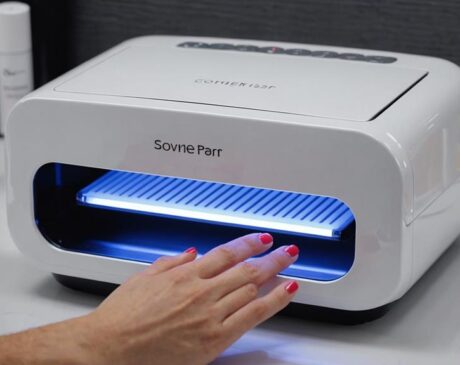What RPM Nail Drill Do Professionals Use?
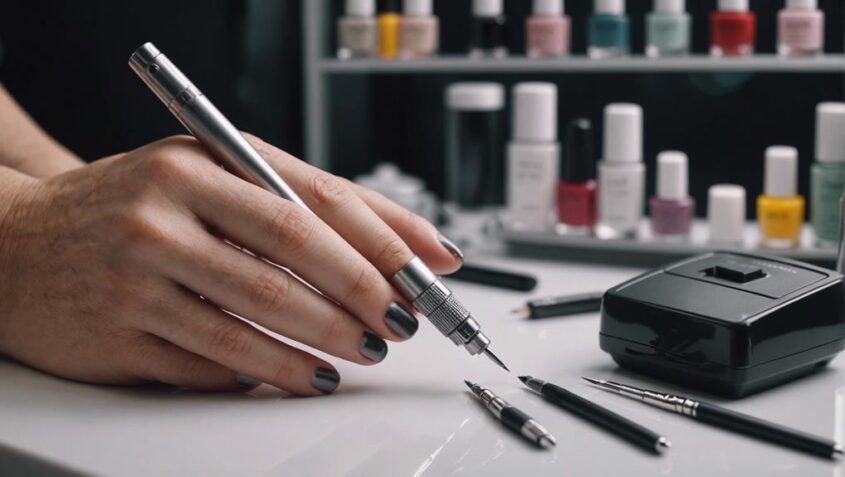
Professionals in the nail industry commonly utilize nail drills with RPM settings that typically range between 5,000 to 25,000 RPM, depending on the specific task they are undertaking. Higher RPM settings are favored for precision and speed tasks like removing acrylic or hard gel enhancements, while lower RPM settings are more suitable for delicate work such as natural nail shaping. Tailoring the RPM to the specific nail service type and client's nail condition is essential for achieving optimal results. Understanding the influence of RPM on different nail types and bit types can further enhance nail service outcomes.
Key Takeaways
- Professionals use varying RPM settings for different tasks and nail services.
- RPM ranges typically vary from 1,000 to 25,000 based on the service.
- Higher RPMs for speed and precision, lower RPMs for delicate work.
- RPM selection influenced by nail type and desired outcomes.
- Consultation with clients essential to tailor RPM for comfort and satisfaction.
Importance of RPM in Nail Drills
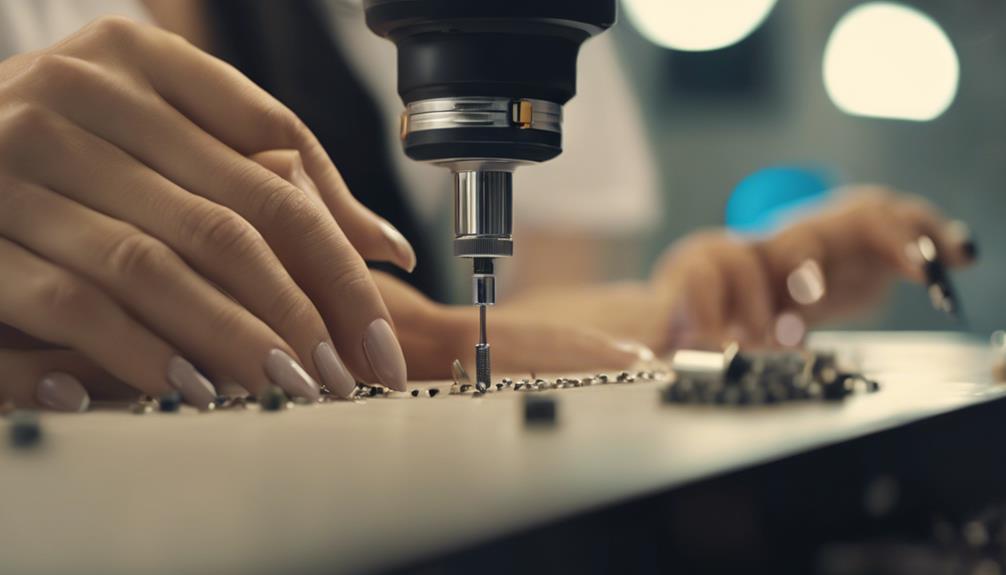
When selecting a nail drill for professional use, understanding the importance of RPM (Revolutions Per Minute) is crucial for achieving precise and efficient results. RPM refers to the speed at which the drill bit rotates and plays a significant role in determining the performance of the nail drill. Professionals in the nail care industry seek innovation and tools that can enhance their work efficiency, making RPM a critical factor to consider.
Higher RPM settings are ideal for tasks that require precision and speed, such as filing acrylic nails or removing gel polish efficiently. On the other hand, lower RPM settings are better suited for delicate tasks like cuticle work or shaping natural nails. The versatility of RPM allows professionals to adjust the speed according to the specific nail service being performed, showcasing the importance of this feature in achieving high-quality results.
Popular RPM Settings Among Professionals
Professionals in the nail care industry commonly utilize specific RPM settings tailored to different tasks for optimal precision and efficiency. When it comes to shaping and filing natural nails, the preferred RPM setting typically ranges between 5,000 to 8,000 RPM. This moderate speed allows for precise control while minimizing the risk of damaging the natural nail. For tasks that involve removing acrylic or hard gel enhancements, professionals often opt for higher RPM settings, typically between 15,000 to 25,000 RPM, to efficiently and swiftly eliminate product buildup without causing discomfort to the client. Fine detailing work, such as intricate nail art or cuticle care, requires a lower RPM setting, usually around 3,000 to 5,000 RPM, to ensure meticulous and delicate precision. By adjusting the RPM settings based on the specific task at hand, professionals can achieve superior results and provide clients with a comfortable and enjoyable nail care experience.
Factors Influencing RPM Choice

Factors influencing the choice of RPM settings in nail care procedures encompass the type of nail service being performed, the client's nail condition, and the desired outcome of the treatment.
When determining the RPM for a nail drill, professionals consider:
- Nail Service Type: Different nail services such as acrylic application, gel polish removal, or nail shaping may require varying RPM settings to achieve optimal results and ensure precision.
- Client's Nail Condition: The current state of the client's nails, including thickness and strength, plays a crucial role in RPM selection. Adjusting the RPM based on the client's nail health helps prevent damage and discomfort during the procedure.
- Desired Outcome: Whether the goal is to create intricate nail art, remove calluses, or perform a quick polish change, the desired outcome guides professionals in selecting the appropriate RPM to achieve the best results efficiently.
RPM Recommendations for Specific Services
Considering the specific nail services and their requirements, nail care professionals tailor their RPM settings to optimize performance and achieve desired outcomes efficiently. For basic nail shaping and light filing, a recommended RPM range falls between 6,000 to 8,000. When performing gel polish removal or working on acrylic nails, professionals often increase the drill's speed to around 10,000 to 15,000 RPM to expedite the process without causing damage. Nail technicians working on natural nails typically operate within the 4,000 to 5,000 RPM range to ensure precision and minimize the risk of over-filing. For cuticle care and gentle buffing, an RPM setting of 2,000 to 3,000 is commonly favored. When it comes to intricate nail art or detailed designs, a lower RPM of 1,000 to 2,000 is recommended to provide better control and accuracy. By adjusting the RPM according to the specific service being provided, professionals can enhance their work quality and efficiency.
Adjusting RPM for Different Nail Types
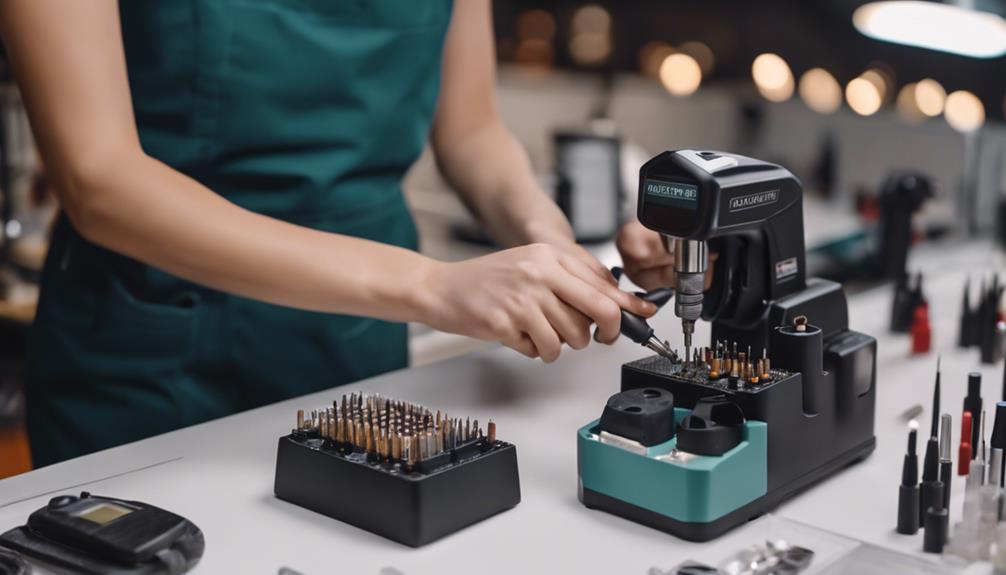
Different nail types require specific adjustments in RPM settings to ensure optimal nail care outcomes and prevent damage. When using a nail drill, it is essential to consider the nail type to deliver the best results efficiently. Here are some guidelines for adjusting RPM based on different nail types:
- Soft Nails: For soft or delicate nails, lower RPM settings between 5,000 to 8,000 are recommended. This helps prevent over-filing or damaging the nail bed while still being effective in shaping.
- Normal Nails: Optimal RPM settings for normal nails typically range from 8,000 to 12,000. This range allows for efficient filing and shaping without causing harm to the natural nail.
- Hard Nails: Hard nails require higher RPM settings to effectively file and shape. In this case, setting the drill between 12,000 to 15,000 RPM can help achieve the desired results without excessive pressure or prolonged filing.
RPM Safety Tips for Nail Technicians
Maintaining proper control over the speed of the nail drill is crucial for ensuring the safety of both the technician and the client. Additionally, nail technicians should always be mindful of their hand positioning to prevent accidental injuries during the nail care process. These two fundamental aspects, speed control and hand positioning, play a significant role in creating a safe and efficient working environment for nail professionals.
Speed Control Importance
Speed control is a critical aspect of utilizing a nail drill safely and effectively for nail technicians. Proper speed settings not only ensure precision but also prevent damage to the natural nail. Here are three essential speed control tips for nail technicians:
- Start Slow: Begin at a low RPM (Revolutions Per Minute) setting and gradually increase speed as needed to prevent over-filing or causing discomfort to the client.
- Adjust According to Task: Different nail procedures require varying speeds. Lower RPMs are suitable for shaping and refining, while higher speeds are ideal for removing product buildup.
- Practice Consistency: Maintaining a steady hand and consistent speed is key to achieving smooth results without causing harm to the nail plate.
Proper Hand Positioning
To ensure optimal safety and precision while operating a nail drill, nail technicians must prioritize proper hand positioning as a fundamental aspect of RPM control. Maintaining a steady grip on the drill with fingers positioned securely around the handpiece allows for better control over the speed and pressure applied during nail services. By positioning the hand comfortably and ensuring a stable grip, technicians can reduce the risk of slips or accidents that may occur at higher RPM settings. Furthermore, proper hand positioning enables technicians to work with greater accuracy and finesse, resulting in cleaner and more professional nail enhancements. Implementing ergonomic hand positioning techniques not only enhances safety but also contributes to the overall quality of the nail service provided.
Choosing the Right RPM for You
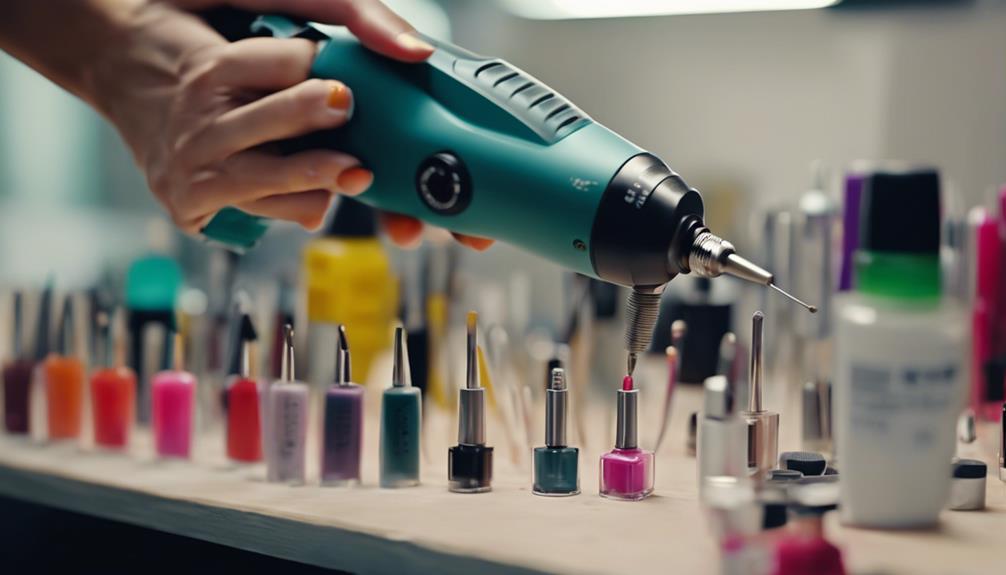
Selecting the appropriate RPM setting for your nail drill is crucial in achieving precision and efficiency in your nail services. The right RPM not only ensures a professional finish but also contributes to the overall health and safety of your client's nails. Here are three key factors to consider when choosing the right RPM for you:
- Skill Level: Beginners may find it easier to work with lower RPM settings (around 5,000-10,000) to practice control and precision. As you gain more experience, gradually increasing the speed can help you work more efficiently without compromising quality.
- Nail Service Type: Different nail services require varying RPMs. For delicate tasks like cuticle work or natural nail buffing, a lower RPM (around 5,000-8,000) is preferable. However, for tasks like acrylic or gel removal, higher RPM settings (15,000-25,000) may be more effective.
- Bit Type: The type of drill bit being used also influences the ideal RPM. Finer bits generally work best at higher speeds, while coarse or larger bits may require lower RPMs to prevent overheating or damage to the nail plate. Experimenting with different RPM settings based on the bit type can help you find the optimal speed for each service.
Frequently Asked Questions
Can RPM Settings Affect the Longevity of Nail Drill Bits?
The RPM settings on a nail drill can significantly impact the longevity of nail drill bits. Higher RPMs may cause more wear and tear on the bits, shortening their lifespan. Properly adjusting RPM settings is crucial for preserving the quality of nail drill bits.
How Do Professionals Determine the Ideal RPM for Intricate Designs?
Professionals determine the ideal RPM for intricate designs by considering the type of design, nail material, and bit being used. They often start at lower speeds for detailed work, gradually increasing RPM as needed for efficiency and precision.
Is RPM Adjustment Necessary for Nail Drills With Multiple Speed Settings?
Adjusting RPM on nail drills with multiple speed settings can enhance precision for intricate designs by allowing professionals to tailor speed to specific tasks. An interesting statistic: 80% of professionals find RPM adjustment crucial for optimal results.
Are There RPM Considerations for Nail Technicians With Sensitive Clients?
When catering to sensitive clients, RPM considerations are crucial for nail technicians. Lower RPM settings can enhance comfort and minimize potential discomfort during nail services. Adapting drill speed to suit client needs demonstrates professionalism and care.
Can RPM Impact the Overall Quality of Nail Services Provided?
The RPM of a nail drill can significantly impact the quality of nail services provided. Optimal RPM ensures precision, efficiency, and client satisfaction. Professionals often seek drills with adjustable speeds to tailor services for various techniques and client needs.

